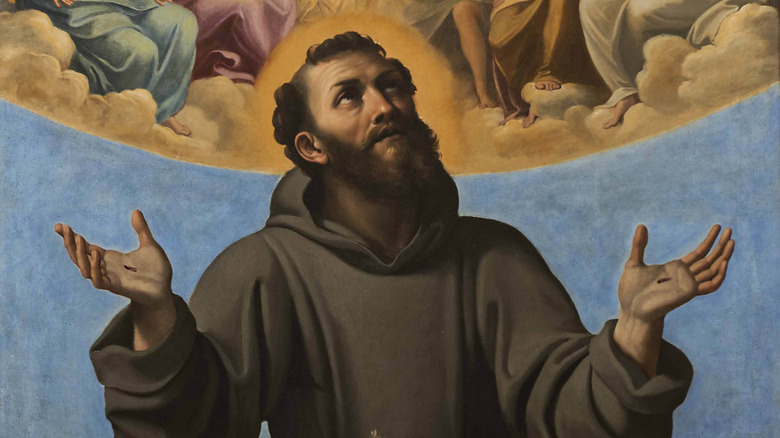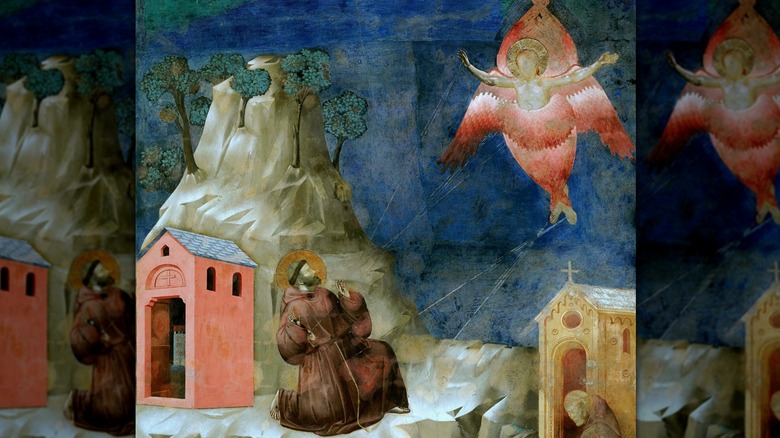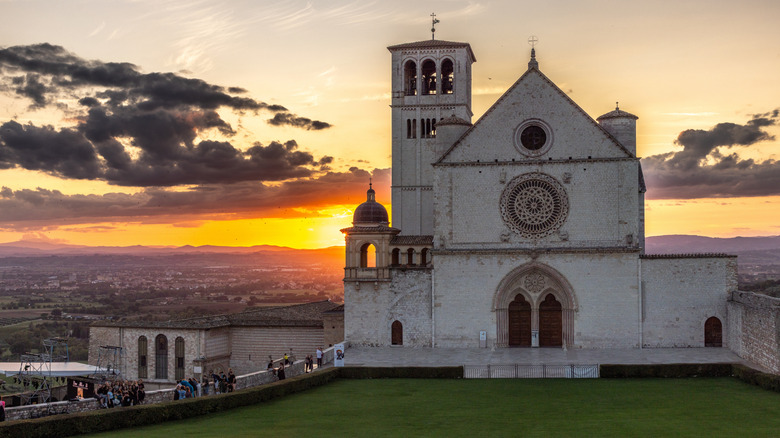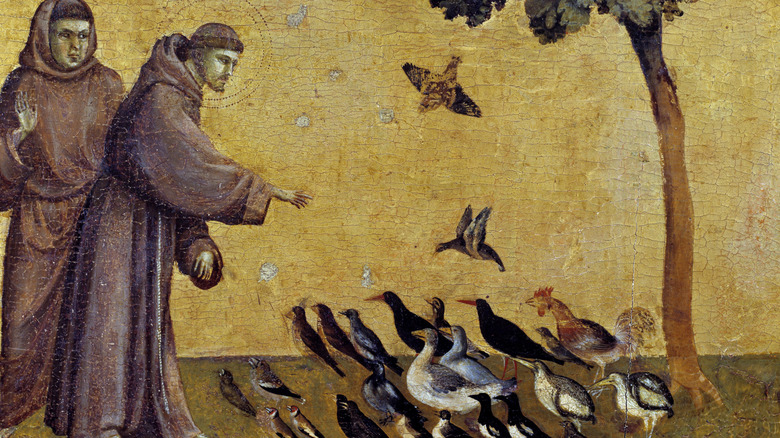You Can See St. Francis Of Assisi's Remains In 2026 (And It Only Took 800 Years)
Catholics around the world will soon have the chance to see something that has been kept from the eyes of believers for hundreds of years: the remains of St. Francis of Assisi, the venerated figure who died in 1226 and after whom the recently deceased Pope Francis was named, and whose bones have been hidden from view ever since. The news means that the papal Basilica of St. Francis of Assisi, the resting place of St. Francis after his death and a popular place of worship ever since, can now expect a deluge of pilgrims looking to pay their respects to one of the most important Catholic figures of the last millennium.
The plan was announced on October 4, 2025, the day that Catholics celebrate the feast of St. Francis of Assisi. A statement from the Sacro Convento shared by the Vatican website explained: "This exposition, rooted in the Gospel theme of the seed that dies to bear fruit in love and fraternity, invites us to reflect on the life of the Saint, which continues to bear fruit 800 years later and still inspires humanity along the path of peace, fraternity, service to the poor, joy, and care for creation."
Who was St. Francis of Assisi?
Francesco di Pietro di Bernardone was born in the Italian town of Assisi in either 1181 or 1182. The son of a cloth merchant and his French wife, the future saint fought in the war of 1202 between Assisi and the nearby town of Perugia, became a prisoner of war, and was released after a period of illness. He seemed likely to continue to be involved in the battles of that time, but a vision he received while traveling in 1205 made him reconsider his path.
Returning to Assisi, he began a period of prayer and isolation while awaiting divine intervention, which at one point he claimed arrived in a vision of Jesus Christ at a nearby grotto. Francis' behavior became more Christ-like, living with impoverished people in the streets and giving help to the ostracised lepers he encountered. After receiving a miraculous message from God to "repair my house which, as you see, is well-nigh in ruins" (via Britannica), Francis renounced all worldly goods and dedicated himself to repairing damaged churches and chapels.
Francis dedicated himself to preaching, and with a papal blessing he founded the Franciscan Order, the rules of which dictated that its followers should live in imitation of the Christian messiah. Francis would also fast and retreat into the mountains for solitude and to pray. A later miraculous encounter with a vision of a crucified seraph — a four-winged angel – was said to have left Francis with stigmata; marks on the palms, feet, and flank reminiscent of the wounds that Christ received on the cross.
St. Francis of Assisi's death and resting place
St. Francis died in the town of his birth, Assisi, on October 3, 1226, while still only in his mid-40s. He had contracted an infection that had left him blind in his final months, and though he had travelled to the town of Rieti to seek treatment, nothing could be done for him. The claimed encounter with the seraph had occurred around two years earlier, and Francis reportedly made efforts to hide the stigmata from those around him. However, after his death, two of his followers provided written testimony that the markings on his body existed, and that upon his death, his remains resembled those of a crucified man.
Belief in the miracle grew, and Francis was soon canonized as a saint by Pope Gregory IX on July 15, 1228. The following day, construction began on the Basilica of St. Francis of Assisi, where his remains would be laid to rest.
Relics in the Catholic faith
The bones of St. Francis of Assisi will be laid at the foot of the altar from 22 February to 22 March, 2026. They are currently interred in the crypt of the Basilica of St. Francis of Assisi and are considered by the Catholic faith to be a relic.
A relic, derived from the Latin for "that which remains," is either a physical part of a saint left behind after death, or an object closely related to them while they were alive. Bodily remains are described as "first class" relics, while objects the saints touched or possessed are "second class." Another category of "third class" relic exists, which denotes significant objects that have come into contact with the two higher classes of relic.
Relics are considered holy in the Catholic faith and are said to act as earthly conduits for divine action. Many believers undertake pilgrimages to the sites of holy relics for various reasons, including prayer and devotion, for their health or the health of loved ones, or simply to pay their respects to the saint in question. St. Francis of Assisi is also considered the patron saint of ecology and of animals, and visiting his remains may be of interest to Catholics seeking guidance or intervention with issues affecting the natural world, or who simply want to pray for beloved pets.



